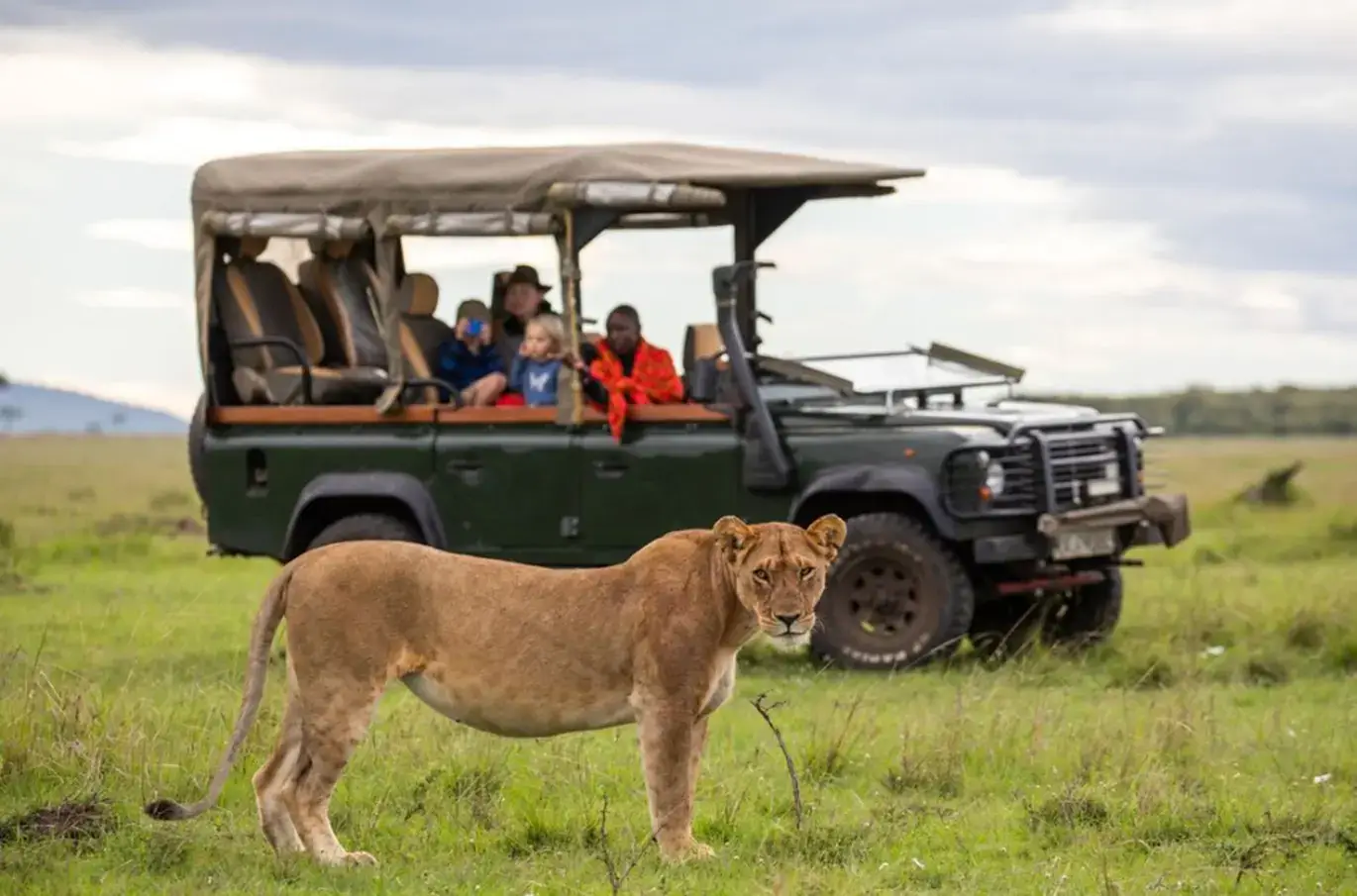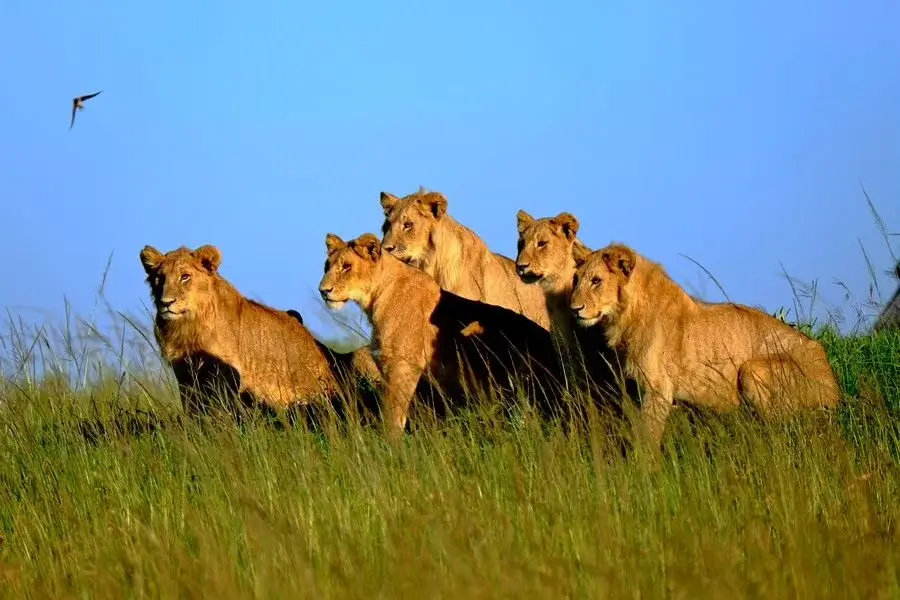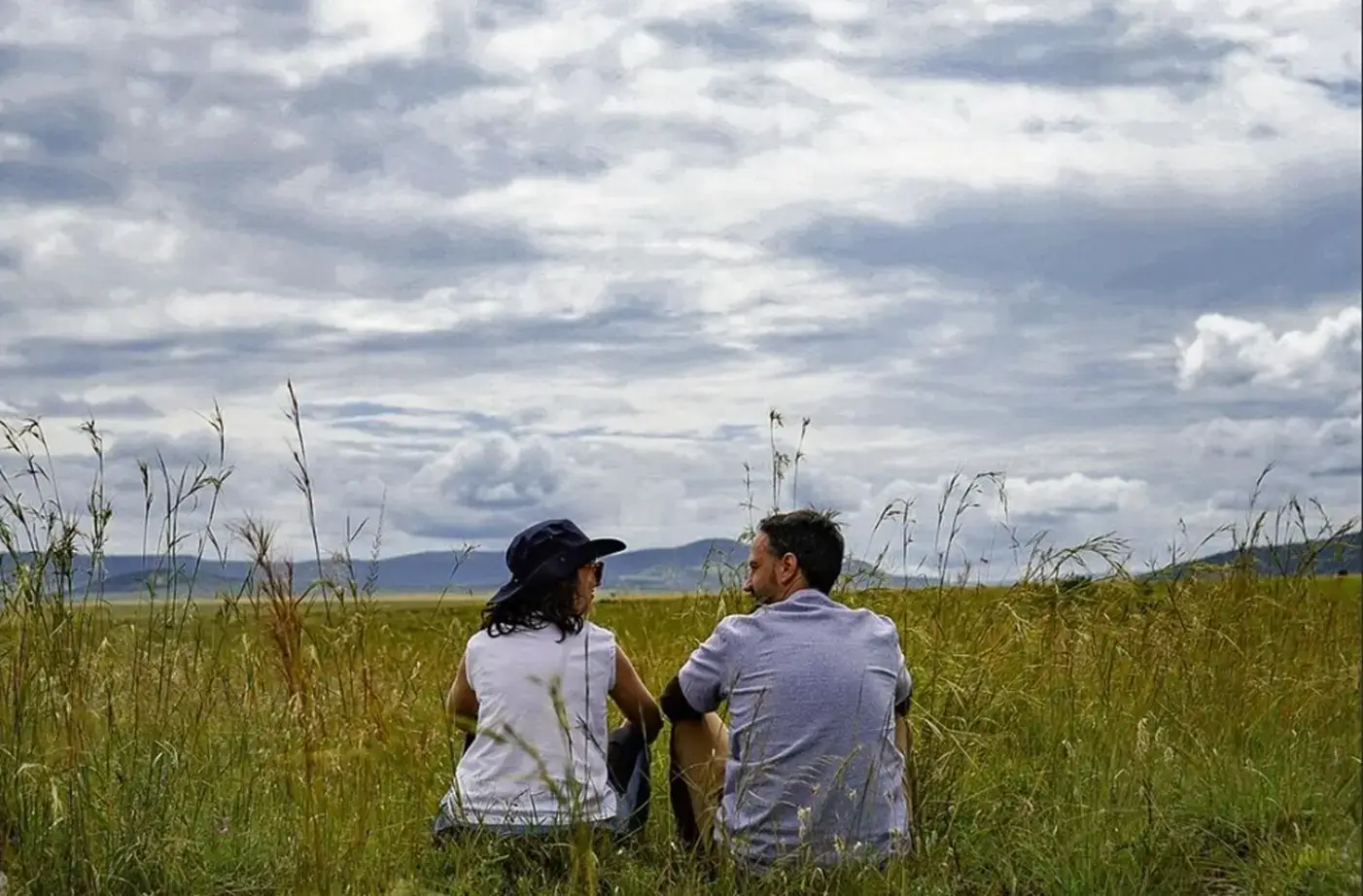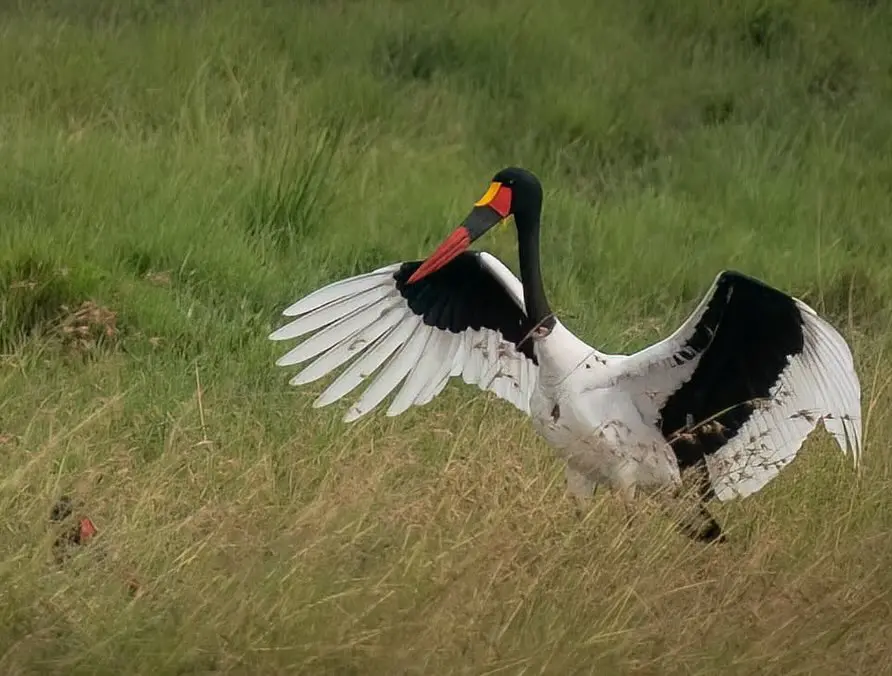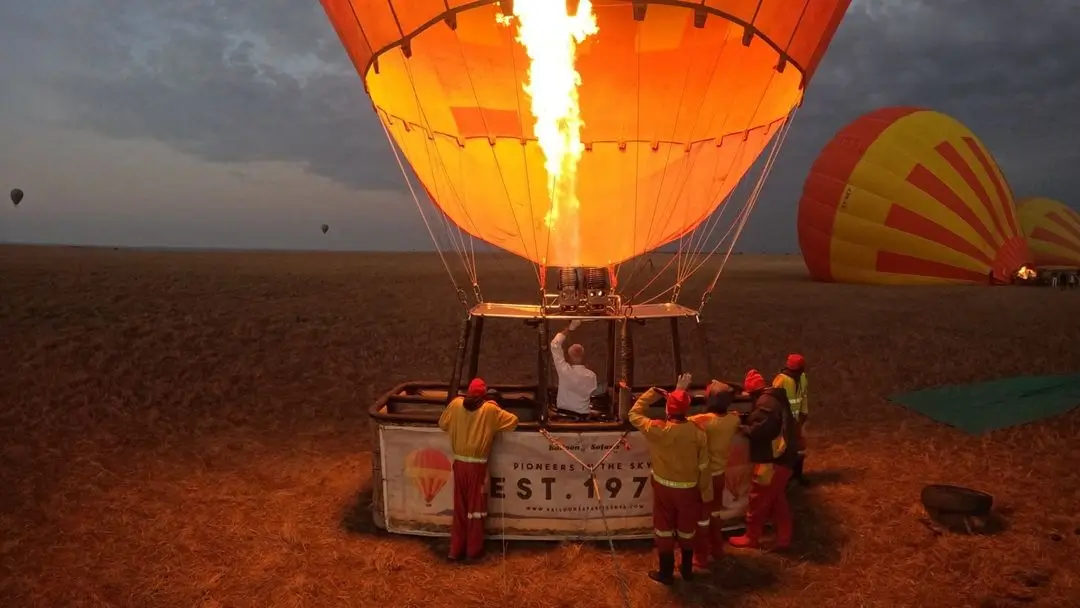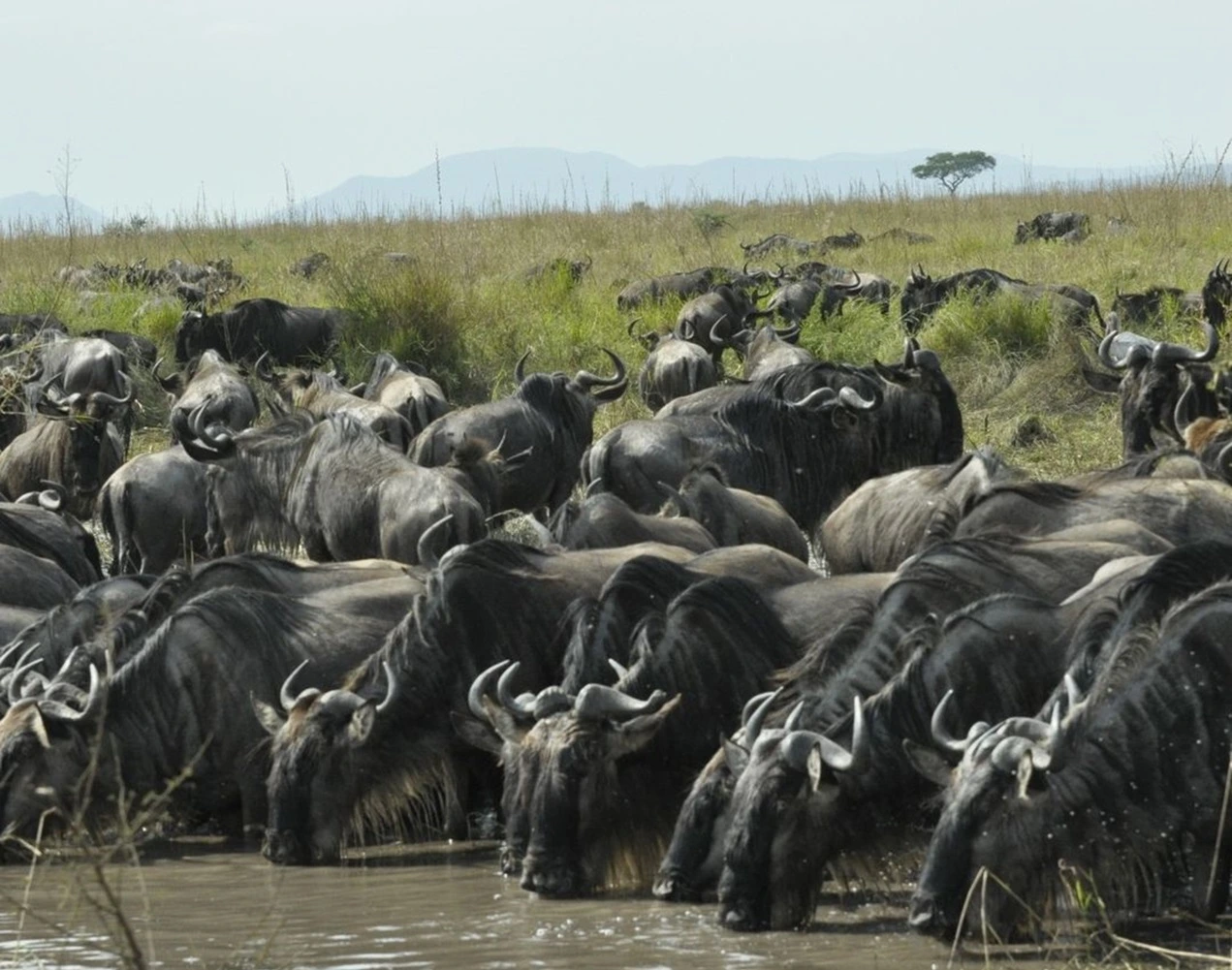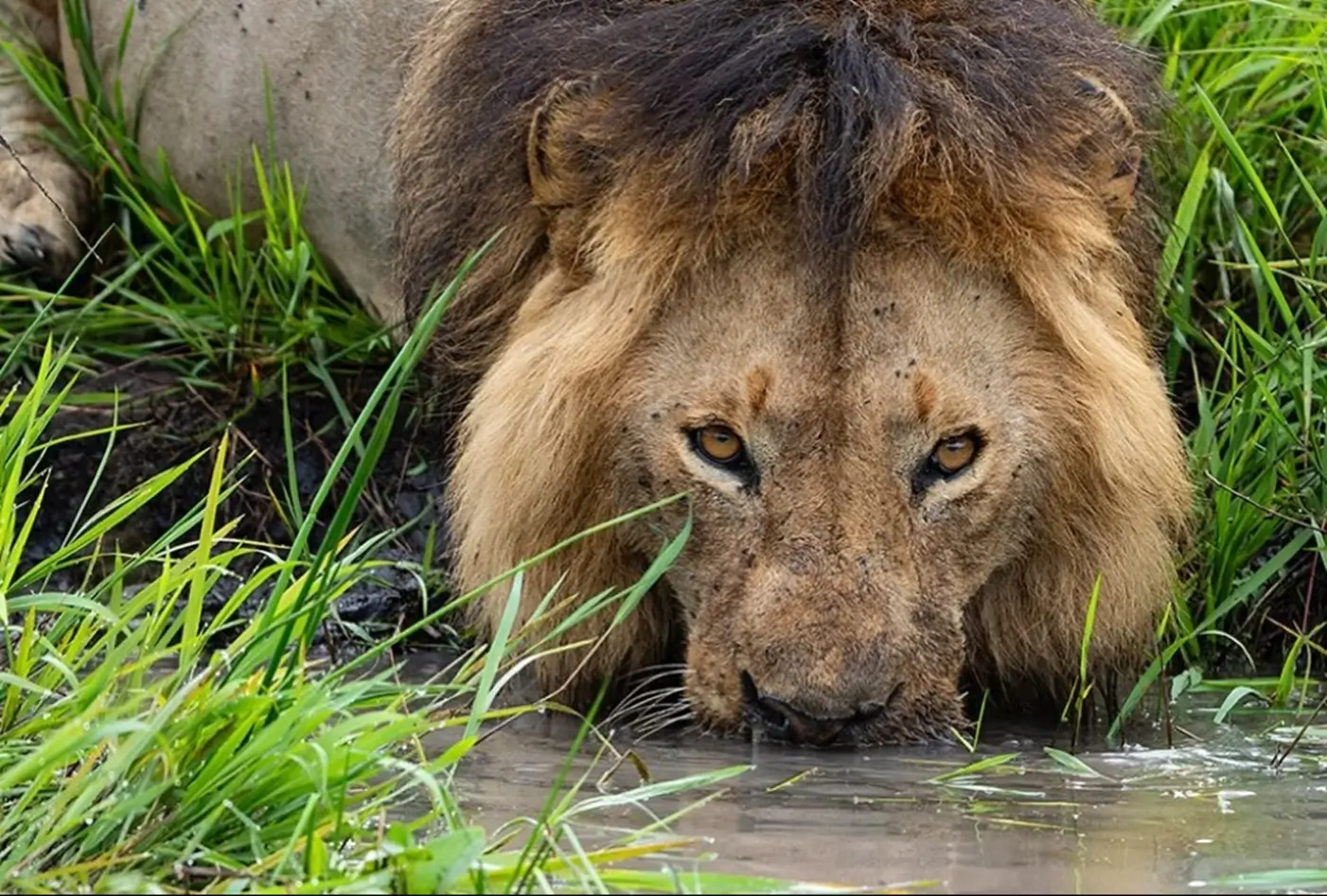
The best overall time to visit the Masai Mara for a safari is from June to October, during the dry season. This period offers exceptional wildlife viewing, including the famous Great Migration, where millions of wildebeests and zebras cross the Mara River.
Additionally, the dry conditions make it easier to spot the Big 5 (lion, elephant, buffalo, leopard, and rhino) as animals congregate around water sources, and the vegetation is thin, providing excellent visibility.
Best Time for Lion Viewing and Predator Activity (January to March)
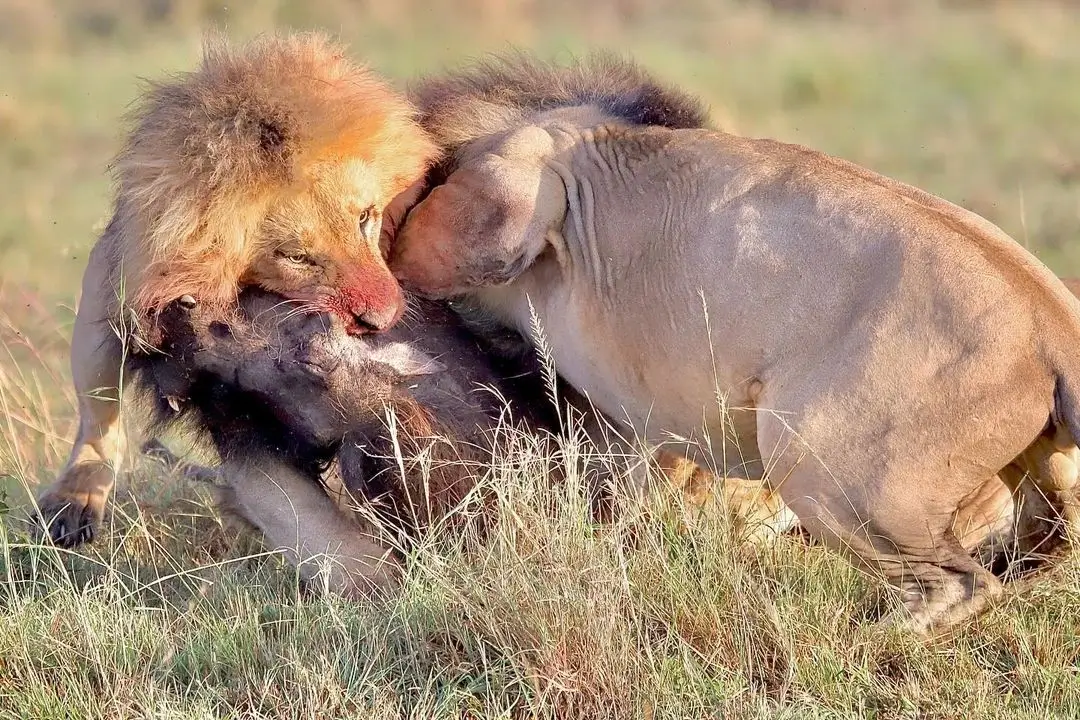
The best time for viewing lions and witnessing unique predator activity in the Masai Mara is from January to March. This period is often referred to as the "Lion Season."
During this period, large predators like lions, leopards, and cheetahs are more active and easier to spot due to the calving season, when many herbivores, including wildebeests and zebras, give birth.
This abundance of young and vulnerable prey draws predators, making predator-prey interactions more common and dramatic.
What makes this time especially attractive for safari-goers is the relative lack of tourists, offering a more intimate experience.
The lush but manageable vegetation and smaller crowds provide excellent opportunities for uninterrupted views of big cats in action.
Additionally, leopards and cheetahs are often more visible during this season, particularly in the private conservancies where the wildlife roams freely with fewer disturbances from vehicles and tourists.
If you're looking for the excitement of predator hunts and a quieter, less crowded safari, January to March is the ideal period for spotting these apex predators at their most active. Start making your trip with Kenya Peaks Adventures for your safari today.
Best Time for the Big 5 (June to October)
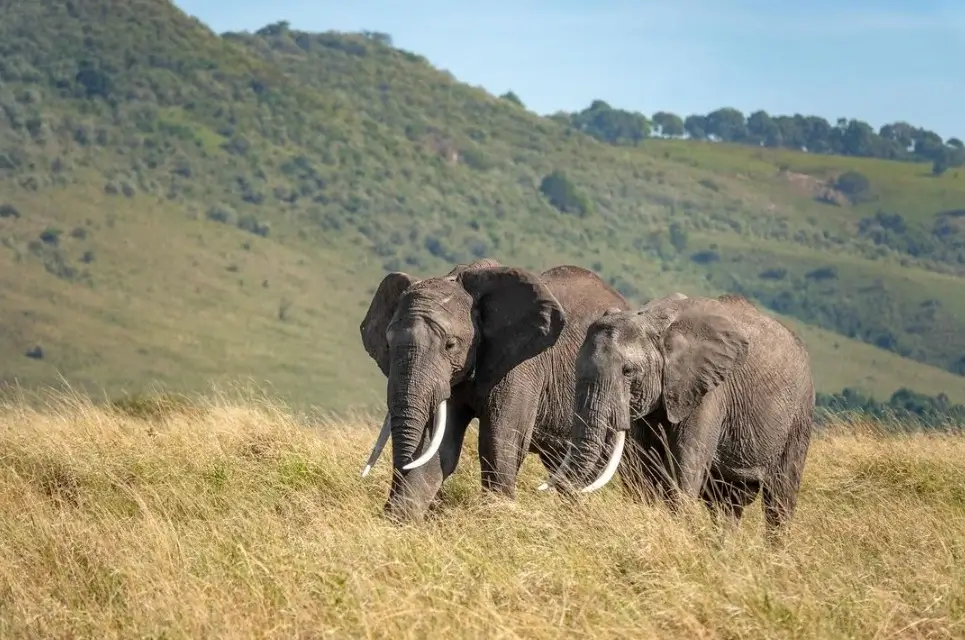
The best time to see the Big 5—lion, elephant, buffalo, leopard, and rhino—is from June to October, during the dry season. This period is ideal because wildlife congregates around permanent water sources, making it easier to spot these iconic animals in the open plains of the Masai Mara.
During these months, the vegetation is sparse due to the lack of rainfall, allowing for clearer visibility across the landscape. This makes it particularly advantageous for spotting predators like lions, leopards, and cheetahs as they stalk their prey.
Elephants and buffalos are more commonly seen around waterholes, while black rhinos can often be found in the Mara Triangle, a quieter area of the reserve where they search for water.
For safari enthusiasts seeking to tick off the Big 5 from their list, this season offers the highest probability of sightings.
Additionally, the dry conditions not only bring out the big game but also make the roads more navigable, enhancing the overall safari experience.
Best Time for Birdwatching (November to May)
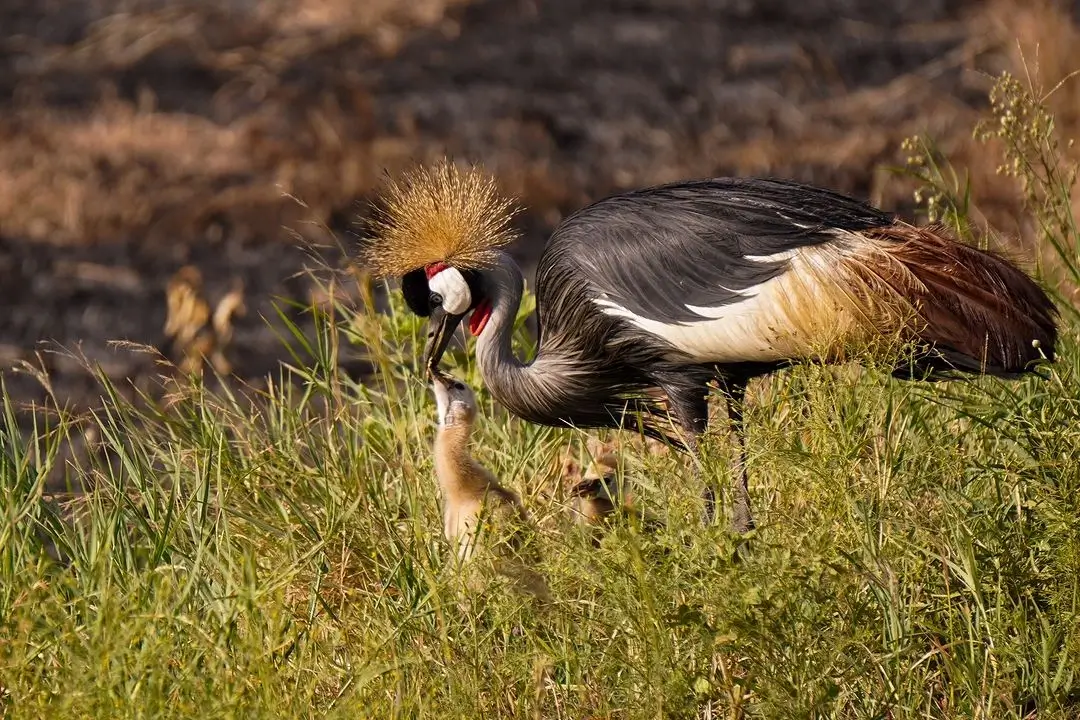
The best time for birdwatching in the Masai Mara is from November to May, during the wet season. This period is marked by the arrival of migratory birds, making the park a paradise for bird enthusiasts.
A wet season is ideal because we have over 500 species of birds, including vibrant varieties like kingfishers, storks, and eagles.
The rains transform the Masai Mara into a lush, green landscape, providing a stunning backdrop for birdwatching. Though the wet conditions can make some roads more challenging to navigate, the diversity and abundance of birdlife during this period more than compensate for the inconvenience.
Water birds are particularly active during this time, and many birds engage in breeding activities, adding to the variety of behaviors to observe.
For those who prioritize birdwatching over big game viewing, November to May is the ideal time to visit the Mara, especially as this season offers a more tranquil experience with fewer crowds.
Best Time for Elephants and Buffalos (Year-Round)
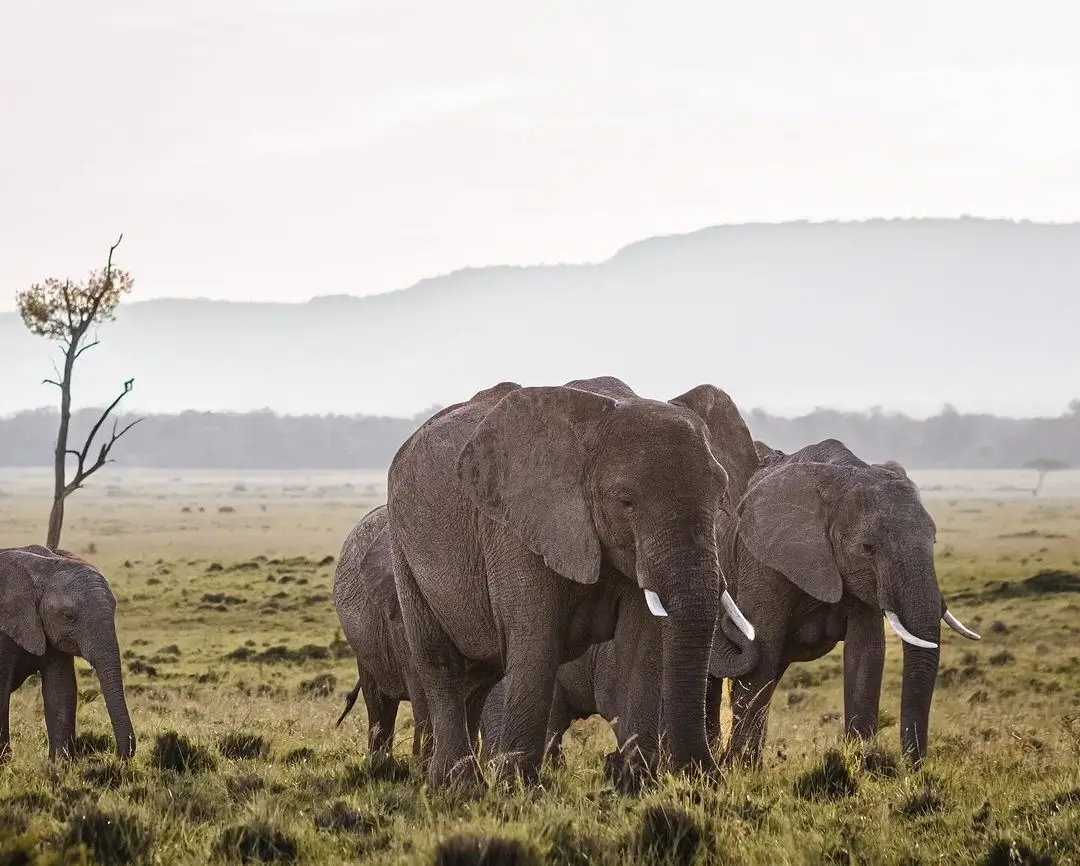
Every month of the year is a good time for viewing elephants and buffalos at Masai Mara National Reserve. These large herbivores are a constant presence in the reserve, with elephants roaming in family herds and buffalos often moving in large groups.
However, during the dry season (June to October), these animals are more concentrated around the rivers and waterholes, making them easier to spot. As water sources become scarce, elephants and buffalos gather in greater numbers, providing excellent viewing opportunities at close range.
During the wet season, they disperse across the plains, but even then, the wide-open savannah still offers frequent sightings of these giants.
The Rainy Season at Masai Mara National Reserve (April to May)
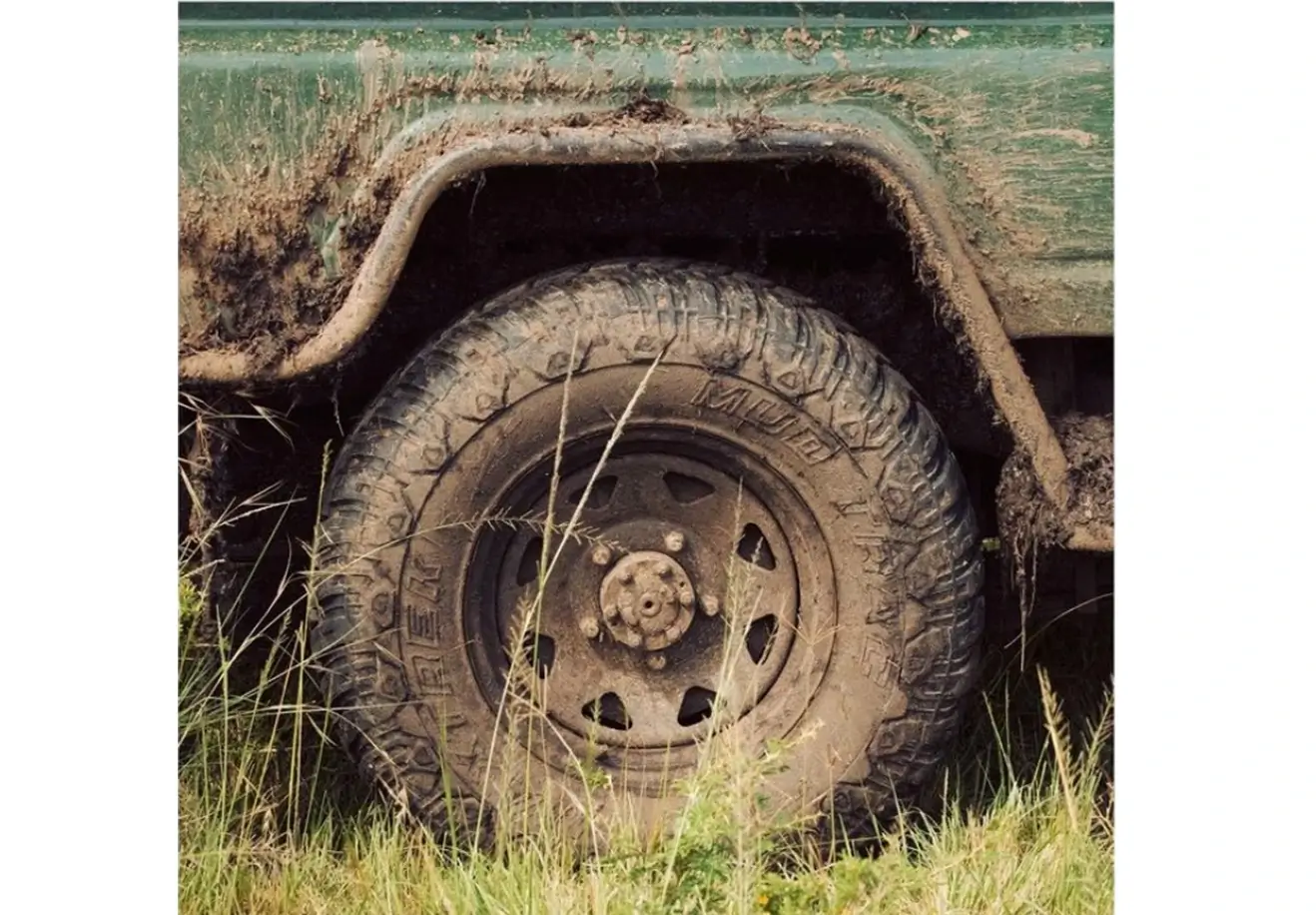
The rainy season in the Masai Mara, particularly from April to May, offers a unique and adventurous safari experience.
This period is full of heavy rains that can make roads muddy and challenging to navigate. However, the rains also brings a lush transformation to the landscape, making the reserve beautiful.
During this time, predator activity is still high due to the abundance of herbivores, making it a great period to witness lions, cheetahs, and leopards hunting. The increased prey populations draw out predators, and the thick vegetation provides perfect ambush cover, leading to some thrilling wildlife encounters.
However, because of the rains, you will need a 4x4 vehicle for the rougher terrain, and it’s important to note that some lodges may close during this season due to accessibility challenges.
Private Conservancies for Safari All Year-Round
For a more secluded and exclusive safari experience, the private conservancies surrounding the Masai Mara offer excellent wildlife viewing year-round. These conservancies are privately managed areas that border the national reserve and often provide a more intimate safari setting with fewer tourists.
Below is a list of some major private conservancies around Masai Mara National Reserve:
- Mara North Conservancy – One of the largest conservancies, known for its diverse wildlife and prime location for viewing the Great Migration.
- Olare Motorogi Conservancy – Famous for its high population of lions and other big cats, offering a peaceful safari experience with fewer visitors.
- Naboisho Conservancy – Renowned for having one of the highest densities of lions in Africa, along with elephants, giraffes, and zebras.
- Ol Kinyei Conservancy – A quieter, pristine conservancy ideal for rich wildlife encounters and birdwatching.
- Lemek Conservancy – Known for its leopards, lions, and cheetahs, offering a secluded and crowd-free safari experience.
- Olderkesi Conservancy – This conservancy is managed by the Maasai community. It offers a more untouched and sustainable safari experience.
- Olarro Conservancy – Ideal for viewing large herds of elephants and buffalos in a tranquil, less-visited area.
In these conservancies, you can enjoy off-road game drives and night safaris, which are not typically allowed within the main reserve. This allows for closer encounters with the Big 5 and other wildlife, including some of the best opportunities to see leopards and cheetahs—especially during the February to March period when visibility is good but the landscape is still lush after the rains.
The private conservancies also support sustainable tourism, often limiting the number of vehicles per sighting, ensuring a more personalized and less crowded safari experience.
For those seeking a quieter, more immersive safari with excellent game viewing and fewer restrictions, these conservancies are an ideal choice throughout the year.
Best Time for Photography (November to December)
The best time for photography in the Masai Mara is during the period from November to December, just after the short rains. We have found that this season transforms the landscape into a lush and vibrant setting, perfect for capturing stunning wildlife photographs.
The greenery contrasts beautifully with the animals, creating excellent conditions for shooting everything from big game to birds in their colorful plumage.
The lighting conditions during this time are ideal for photography, with the soft post-rain light enhancing visibility and color saturation. Furthermore, the lack of dust in the air after the rains provides clear, sharp images, whether you are focusing on the expansive landscapes or close-ups of wildlife.
